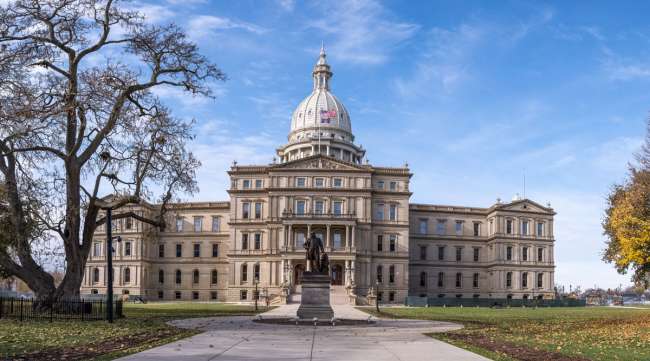MLive.com (Walker, Mich.)
Michigan Creates Office to Navigate Emerging Tech in Transportation

[Ensure you have all the info you need in these unprecedented times. Subscribe now.]
There are 17 state of Michigan departments working on some aspect of the future of transportation mobility and electrification.
And they’re not all talking to each other, said Trevor Pawl, Michigan’s chief mobility officer. Which is why the state is creating a centralized team to handle such issues, with the new Office of Future Mobility and Electrification.
“If you’re a company, it’s tough to know where to begin,” Pawl said.
The new office launched last week and will have six to 10 employees once hiring freezes are lifted, Pawl said. The budget is still an unknown, he said, but OFME will have funding to give grants to Michigan businesses.

How can fleet managers harness technology to get a better handle on vehicle speed and improve their safety culture? Host Seth Clevenger speaks with Mathieu Boivin of E-Smart and Jonathan Hubbard of SpeedGauge. Hear a snippet, above, and get the full program by going to RoadSigns.TTNews.com.
Michigan has long been a leader in “mobility,” when it comes to the auto industry. While personal vehicles are a piece of mobility, Pawl wants to be a liaison for Michigan companies as they innovate what the future of getting around looks like.
Besides giving grants and serving as a liaison for mobility companies and the state government, the OFME can help draw talent to Michigan and work to develop mobility-friendly state policy, Pawl said.
The payoff is twofold: Helping Michigan’s mobility-driven economy thrive and making travel safer and easier for residents.
“I want this state to be one of the easiest places to move around — whether you’re in the city or whether you’re in the country,” Pawl said. “It’s as much about creating jobs in mobility and automotive as it is about leveraging new technologies to improve the lives of Michigan residents.”
There have been nearly 10,000 fatal vehicle crashes in Michigan in the past decade, per the state, with 94% attributed to human error. Autonomous vehicles and other technology can change that, Pawl said.
“The sooner smart infrastructure and smart technology in vehicles is deployed, the more lives can be saved,” Pawl said. “That’s what’s creating our sense of urgency.”
The challenge for the OFME will be to know how to navigate the bureaucracy of government, while not being afraid to dream big.
Pawl has experience in both areas. He was the senior vice president of business innovations at the Michigan Economic Development Corporation. And Pawl gave a Ted Talk in 2018 on the future of mobility, with plenty of ideas of what Michigan could look like in 2068.
“Be bold. Try big things,” Pawl said in the talk. “Because the year 2068 will belong to the city that prepares for it best.”
Ideas ranged from levitating trains gliding at airline speed through vacuum tubes, to small electric aircraft that can Uber workers from their Ann Arbor apartment to their Detroit office in 10 minutes.
Michigan’s immediate mobility future includes self-driving vehicles, drones interacting with buildings to deliver packages faster and ride-sharing services, Pawl said.
The way vehicles are powered will also see a shift — as Pawl said electric vehicles will overtake internal combustion vehicles in popularity by 2030. But will there be enough electric vehicle charging infrastructure in Michigan to accommodate it?
“These changes are coming very fast,” Pawl said. “They’re going to impact jobs and they’re going to impact quality of life in the state. We have to be ready.”
Want more news? Listen to today's daily briefing:
Subscribe: Apple Podcasts | Spotify | Amazon Alexa | Google Assistant | More
Distributed by Tribune Content Agency, LLC




